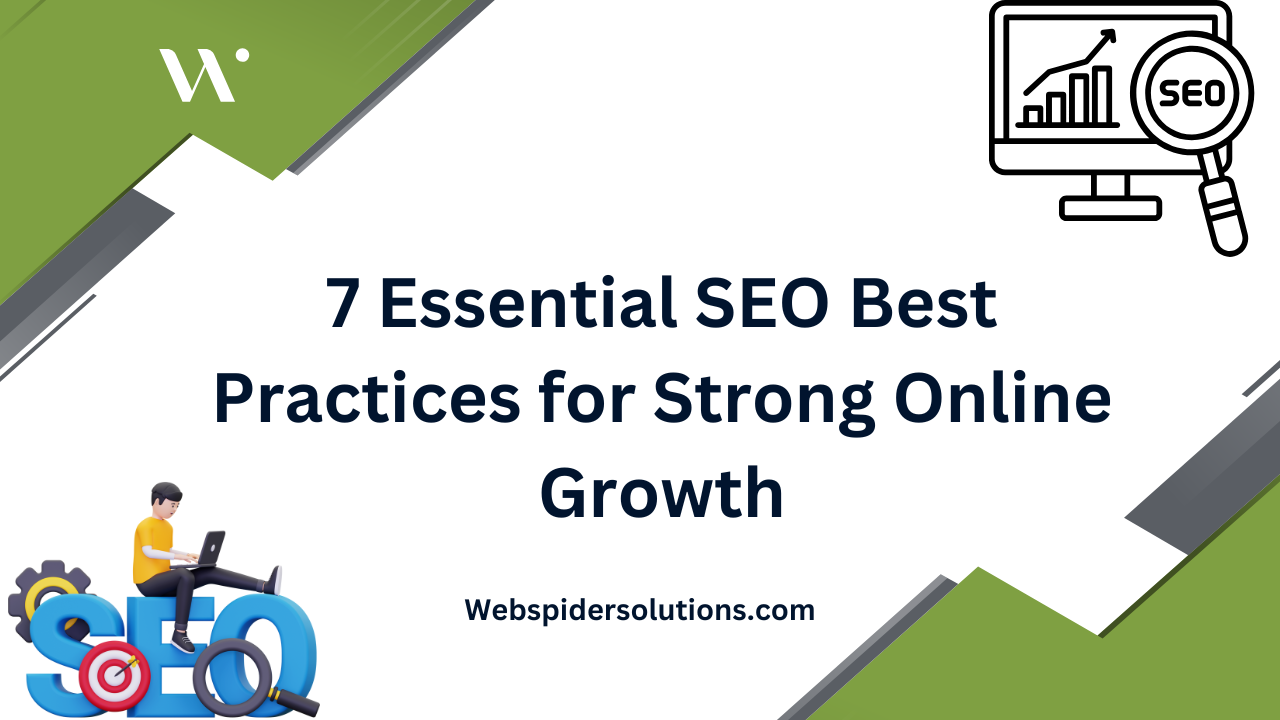Nearly 60 percent of consumers say brand reputation influences their buying decisions. In a crowded market, your business must stand out for the right reasons. Building a strong brand goes beyond catchy slogans or pretty logos. This step by step guide will show you how to create a trusted reputation by identifying your values, connecting with your true audience, and managing every touchpoint with intention.
Table of Contents
- Step 1: Identify Your Brand Values And Audience
- Step 2: Optimize Your Online Presence And Messaging
- Step 3: Encourage And Manage Customer Feedback
- Step 4: Engage Consistently Across Digital Channels
- Step 5: Monitor And Adapt Brand Reputation Strategies
Quick Summary
| Key Point | Explanation |
|---|---|
| 1. Identify brand values and audience | Understand your principles and target demographic to create authentic messaging. |
| 2. Optimize online presence and messaging | Ensure digital communication reflects your brand identity consistently across platforms. |
| 3. Encourage and manage customer feedback | Collect and respond to feedback transparently to improve customer relationships. |
| 4. Engage consistently across channels | Maintain synchronized messaging and timely interactions across all digital platforms. |
| 5. Monitor and adapt brand strategies | Continuously track perception and make data-driven adjustments to enhance reputation. |
Step 1: Identify your brand values and audience
Building a successful brand starts with understanding who you are and who you serve. This step involves deep introspection about your business core principles and precise identification of your target demographic.
Understanding your target audience requires more than basic demographic research. According to Wikipeadia, psychographic segmentation like the VALS methodology helps businesses categorize consumers beyond simple age or income metrics. By examining psychological characteristics including beliefs, motivations, and lifestyle priorities, you can develop a nuanced understanding of your potential customers.
To effectively identify your brand values, start by asking critical questions about your business mission. What problem does your company solve? What principles guide your decision making? What unique perspective do you bring to your industry? Write down 3-5 core values that represent your authentic business philosophy. These values should be specific and meaningful rather than generic corporate platitudes.
Research from Wikipedia suggests that successful businesses align their brand messaging directly with their target audience’s psychological profile. This means translating your core values into language and imagery that resonates with your specific customer segment. Conduct surveys, interview potential customers, and analyze competitor positioning to refine your understanding.
Warning: Avoid creating a generic brand identity. Your values and audience targeting must be genuine and specific to your unique business context. Generic messaging gets lost in the noise of modern marketing.
In the next step, you will transform these insights into a compelling brand narrative that attracts and retains your ideal customers.
Step 2: Optimize your online presence and messaging
Optimizing your online presence requires a strategic approach that aligns your digital messaging with your brand identity. This step will help you create a consistent and compelling online narrative that attracts and engages your target audience.
According to research from ArXiv, improving brand consistency involves developing integrated models that analyze linguistic features across web content. This means carefully examining how your brand communicates across different platforms to ensure a unified message. Start by conducting a comprehensive audit of your existing online channels including your website, social media profiles, email communications, and digital marketing materials.
Social media archives can provide valuable insights into crafting a cohesive digital strategy. Research from Wikipedia highlights the importance of visual brand language, emphasizing that design elements like color, typography, and composition communicate your brand’s personality. Develop a consistent visual style guide that can be applied across all digital platforms.
Practical steps for optimization include developing a content calendar that maintains consistent messaging, creating template designs that reflect your brand identity, and training your team on brand communication standards. Ensure that every piece of content whether its a social media post, blog article, or email newsletter reflects your core brand values and speaks directly to your target audience.
Warning: Inconsistent messaging can confuse potential customers and dilute your brand impact. Every communication should feel like it comes from the same authentic voice.
In the next step, you will learn how to measure and refine your online brand reputation through strategic monitoring and engagement.
Step 3: Encourage and manage customer feedback
Successful brand reputation hinges on your ability to effectively collect, analyze, and respond to customer feedback. This step will help you transform customer insights into opportunities for growth and relationship building.
Research from ArXiv reveals advanced approaches for reputation analysis, highlighting how deep learning techniques can help businesses monitor and assess customer sentiment across digital platforms. By leveraging sophisticated language models, you can develop a nuanced understanding of your brand’s perception.
Understanding your hotel reputation management strategies can provide valuable insights into feedback collection. According to Wikipedia, effective customer feedback management involves identifying both demographic and psychographic characteristics of your consumers. This means creating multiple channels for feedback that make it easy and appealing for customers to share their experiences.
Practical strategies for encouraging feedback include implementing user friendly survey mechanisms, creating incentives for honest reviews, and establishing a responsive communication system. Design feedback forms that are concise and straightforward. Offer small rewards like discount codes or entry into prize draws to motivate customers to share their thoughts.
Warning: Never manipulate or filter out negative feedback. Authentic responses to critical comments demonstrate transparency and commitment to improvement.
In the next step, you will learn how to strategically leverage customer feedback to continuously enhance your brand reputation and customer experience.
Step 4: Engage consistently across digital channels
Building a powerful brand reputation requires strategic and consistent engagement across multiple digital platforms. This step will help you create a unified communication approach that resonates with your target audience and amplifies your brand message.
Research from ArXiv highlights the importance of identifying influential nodes in online social networks. By constructing weighted network models and evaluating user engagement, you can pinpoint key individuals who can help spread your brand message effectively across different digital channels.
Learn from our cross channel marketing guide to develop a comprehensive digital engagement strategy. Your approach should include synchronized messaging across platforms like social media, email, website, and digital advertising. Develop a content calendar that ensures consistent brand voice and timing across these channels.
Practical strategies for consistent digital engagement include creating platform specific content that maintains your core brand message, responding promptly to customer interactions, and using analytics to understand audience behavior. Invest in tools that help you track and manage your digital presence efficiently. Ensure your visual branding color schemes, logos, and design elements remain consistent across all platforms.

Warning: Inconsistent messaging or irregular posting can make your brand appear unreliable. Develop a structured approach to digital communication that feels authentic and dependable.
In the next step, you will learn how to measure and analyze the impact of your digital engagement strategies to continuously refine your brand reputation.
Step 5: Monitor and adapt brand reputation strategies
Successful brand reputation requires continuous monitoring and strategic adaptation. This step will help you develop a proactive approach to tracking your brand perception and making data driven improvements.
Research from ArXiv demonstrates advanced techniques for reputation analysis using deep learning models. By leveraging BERT based approaches, businesses can assess reputational polarity across social media platforms and gain nuanced insights into how their brand is perceived.
Our brand reputation management guide offers comprehensive strategies for tracking your digital presence. Implement a robust monitoring system that includes tracking mentions across social media, review platforms, industry forums, and news sites. Use advanced analytics tools to collect and analyze sentiment data, identifying trends and potential reputation risks before they escalate.
Practical monitoring strategies include setting up Google Alerts for your brand name, using social listening tools to track real time conversations, and creating dashboards that aggregate feedback from multiple sources. Develop a systematic approach to categorizing feedback positive, neutral, and negative and create response protocols for each category.
Regularly conduct sentiment analysis to understand the emotional tone of customer interactions.

Warning: Passive monitoring is not enough. Develop a responsive strategy that allows you to quickly address potential reputation challenges and demonstrate your commitment to customer satisfaction.
In the conclusion, you will learn how to synthesize all these strategies into a comprehensive brand reputation management approach.
Build and Protect Your Brand Reputation with Expert Digital Marketing
Building a strong brand reputation is about more than just great products. It requires clear brand values, consistent messaging, and active engagement to truly connect with your audience. If you are struggling to align your brand identity with your digital presence or to manage customer feedback effectively, you are not alone. Key challenges include maintaining authentic communication and monitoring online sentiment to safeguard your brand image.
At Web Spider Solutions, we specialize in transforming these challenges into opportunities for growth. Our tailored digital marketing services focus on optimizing your online presence using strategic SEO, content marketing, and social media management. By enhancing your brand consistency and monitoring your reputation with advanced analytics, we help you build lasting trust with your customers. Discover how our expertise in B2B marketing can elevate your brand and learn from success stories in our Stories Archives.
Don’t let inconsistent messaging or unmanaged feedback hold your business back. Take charge today by visiting Web Spider Solutions to begin crafting a powerful brand reputation that drives business success. Contact us now to schedule your free consultation and start your journey toward stronger brand presence.
Frequently Asked Questions
How can I identify my brand values for building reputation?
Start by introspecting your business mission and core principles. Write down 3-5 specific values that represent your company’s authentic philosophy, focusing on what makes you unique.
What steps should I take to optimize my online presence for brand reputation?
Conduct a thorough audit of your current online channels, including your website and social media profiles. Create a content calendar to maintain consistent messaging across all platforms within 30 days.
How do I encourage customer feedback to enhance my brand reputation?
Implement user-friendly survey tools and create incentives like discounts for feedback submissions. Encourage customers to share their experiences, aiming to collect insights regularly to inform improvements.
What consistent engagement strategies can I apply across digital channels?
Develop a synchronized content strategy that maintains your core brand message across platforms. Use analytics to track audience engagement levels and adjust your posting frequency weekly for optimal results.
How should I monitor my brand reputation effectively?
Set up monitoring tools to track mentions of your brand in real-time across various platforms. Regularly conduct sentiment analysis to categorize feedback into positive, neutral, and negative, updating your strategies based on insights within 60 days.
How can I adapt my brand reputation strategies over time?
Continuously assess feedback and sentiment data to identify trends or risks to your reputation. Respond proactively to potential challenges and make data-driven adjustments to your brand strategies quarterly.
Recommended











